Michael Brown was killed and his hometown of Ferguson, Missouri, erupted in the grief and anger almost 50 years to the day when racial tension exploded on Columbia Avenue in Philadelphia.
The riots in North Philly, a neighborhood turning increasingly African American in the early 1960s, started on August 28 with a traffic stop of a black motorist (by a black cop, as it happens). It escalated with small acts of violence and then exploded. By the time it was all over on August 30 more than 300 people had been injured, twice as many had been arrested and dozens of businesses closed forever.
The Columbia Avenue riots were among the first large-scale race riots that plagued the long hot summers of the 1960s. They would be followed by violence in Watts, Newark and most infamously in Detroit, but in dozens of other cities around the country as well.
Whatever echoes might resonate across that half century, and from 22nd and Columbia to the streets of Ferguson, I'm struck by a significant geographical difference. The race riots of the 1960s were decidedly urban events. Ferguson, by contrast, is a suburb of a major city, and the protest marches there -- and the disproportionate response with which they were met -- give us an opportunity to talk about the shifting geography of race over the last 50 years in our metropolitan regions.
Ferguson is an example of what urban studies types call an "inner-ring" suburb, a separate municipality close in to a larger city. Part of St. Louis County, Ferguson sits just over 10 miles from downtown St. Louis.
Though it traces its founding back into the 19th century, Ferguson didn't start to grow until the first suburban boom of the 1920s. After the war, Ferguson became emblematic of any number of suburban areas whose growth was fueled by white flight from the nearby city. Between 1940 and 1970 Ferguson expanded to house five times its former population.
During the 1960s and '70s, inner-ring suburbs became the battlegrounds for integration and open housing. These efforts were often met with fierce and violent resistance from white residents. In 1951, white residents of Cicero, Illinois, right outside Chicago, chased out the town's first black family by burning the apartment building into which they had moved. By 1966 when the Congress of Racial Equality led a fair housing march into Cicero, it still had no black residents.
In the 1970s and '80s, however, that resistance turned into resignation and finally moving vans, as whites began to leave the inner-ring suburbs to pursue their dreams further out on the crabgrass frontier. Ferguson's population peaked in 1970 at 28,700. By 2010 it had dropped by roughly 7,500, or about 25 percent. Meanwhile, the percentage of black residents in Ferguson grew from just over half in 2000 to just over two-thirds in 2010. Call it white flight 2.0.
Ferguson is typical in this too. Many inner-ring suburbs -- outside of Chicago, Philadelphia and elsewhere -- have experienced population loss and economic distress. East Cleveland, Ohio, once home to John D. Rockefeller and his fellow robber barons on "millionaire's row," lost over half its population between 1970 and 2010 (from nearly 40,000 to below 18,000), 10,000 residents between 2000 and 2010 alone. This inner suburb is now almost entirely African-American and nearly one-third of its residents live below the poverty line.
Ironically, even while inner suburbs have declined, many inner-city areas have been experiencing revivals to varying degrees. Urban life, not the suburban idyll, is now regarded as desirable by millennials and empty-nesters alike, and this is transforming older cities from Harlem and Hoboken to Seattle.
The tragedy of Michael Brown's killing, compounded by all that has happened subsequently, has forced us to ask questions about race relations, about the way we have militarized our police forces, and about the very nature of justice.
But we should also be asking questions about the nature of Ferguson and about all the inner-ring suburbs like it. What does the erosion of the economic and social fabric in these suburbs mean for the future of our metropolitan regions? What does it tell us about the great social experiment in suburbanization altogether?
In the last quarter century, our older cities, once written off as hopeless and dying, have demonstrated a remarkable capacity to regenerate themselves. It isn't clear that Ferguson and its sister suburbs in decline will be able to remake themselves in the same way. Back in Philadelphia, 50 years after Columbia Avenue was devastated, urban vitality has been returning. Cecil B. Moore, as the avenue is now called, still wears some of the scars of 1964, but new businesses and residents are proving that even after a riot life can return to the city.
Steven Conn teaches history at Ohio State University. His new book, Americans Against the City: Anti-Urbanism in the 20th Century, is out this month with Oxford University Press.